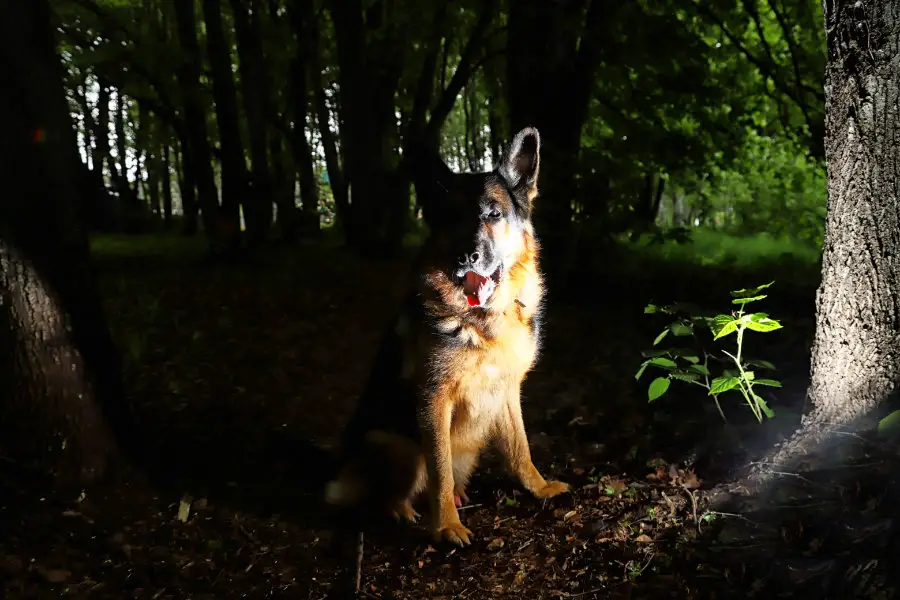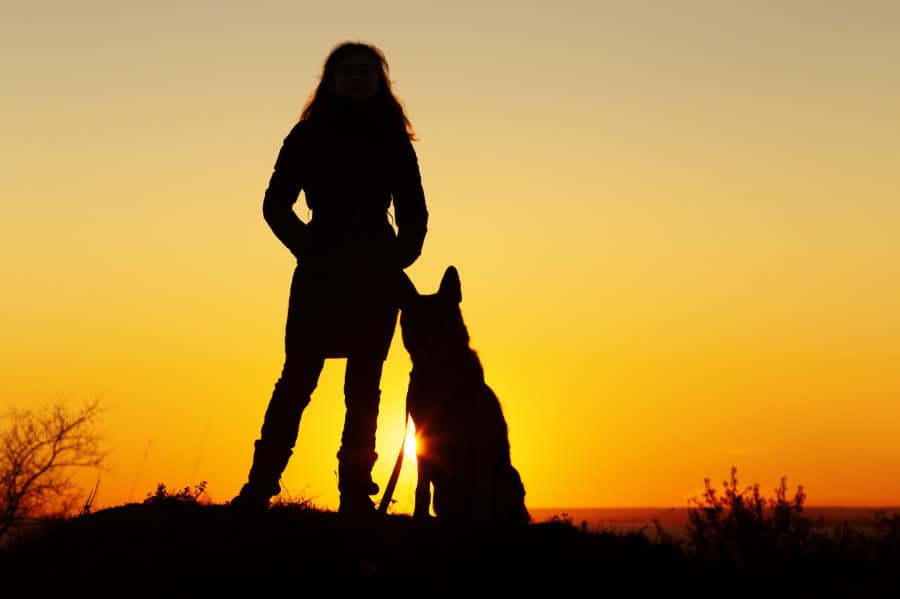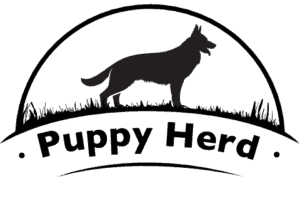You may have noticed that your German Shepherd tends to sleep a lot during the day; however, while you’re asleep at night, you can’t exactly monitor your dog’s every move. So, what are they doing in the middle of the night? Well, they’re probably sleeping, too.
German Shepherds are not nocturnal or diurnal. They are actually crepuscular, which means they are most active during the twilight of dusk hours. However, most dogs tend to be active when their owners are active and tend to sleep when their owners are asleep.
Throughout this article, we will go over the differences between nocturnal, diurnal, and crepuscular. Then, we will discuss these concepts as it pertains to German Shepherds. Lastly, We’ll provide twelve interesting facts about dogs, including German Shepherds.

Time Partitioning
Before we continue, let’s be sure that we know the differences between the time partitions, or the divisions of sleep and awake schedules.
When you think of mammals’ awake and sleep schedules, you usually think of nocturnal and diurnal. But did you know there are more time partitions? There are actually five:
- Nocturnal. If an animal is nocturnal, it means it sleeps during the day and is active during the night. Bats are nocturnal.
- Diurnal. The opposite of nocturnal, diurnal, means that an animal sleeps during the night and is active during the day. Humans, for instance, are diurnal.
- Crepuscular. This means that an animal is mostly active during twilight and dusk. Sometimes, they are especially active on an overcast day or a moonlit night. An example of a crepuscular animal is a house cat.
- Matutinal. A matutinal animal is a type of crepuscular animal. They are mostly active in the very early morning. Bees, for example, are matutinal.
- Vespertine. A crepuscular animal, a vespertine animal refers to any animal that becomes active at dusk. Many insects, and the animals that feed on them, are vespertine.

Dogs Are Crepuscular
Dogs being crepuscular, or active during the twilight and dusk hours has to do with their evolution. Their predatory ancestors would often hunt during twilight and dusk. Although harder to see, there tends to be more prey during these hours, making it easier to hunt.
Dogs are also evolutionarily crepuscular because of the weather. No matter the climate, or where in the world a dog is, it’s a safe bet that the weather is the least severe during the twilight and dusk hours, making it a much easier environment to hunt in.
Being crepuscular refers mostly to wild or feral dogs. However, domesticated dogs tend to follow the sleep schedule of their owner. So, when you’re active, your German Shepherd will be too. When you’re asleep, most likely, they will be asleep as well. Thus, since you are diurnal, then your domesticated German Shepherd will follow suit.
Since German Shepherds tend to sleep twelve to fourteen hours a day, this may vary, as you probably only sleep about eight hours per day. Keep in mind, the amount of sleep your dog needs is dependent upon different factors such as weight, age, and lifestyle.
Twelve Interesting Facts About Dogs (Including German Shepherds)
Now that you’ve learned the fact that dogs are not nocturnal, but crepuscular, here are ten other very interesting facts that you might not have known about your dog:
- Dogs don’t feel guilt. You may have seen your dog give an extremely guilty and ashamed look after doing something bad. However, due to the way their brain works, dogs can’t feel guilt. This look they’re giving you is most probably a response to your upset feelings.
- Dogs can read emotions. Dogs are usually very in-tune with their owners. This is because they can read our emotions just by looking at us. They even have a left gaze bias, which means that dogs, just like humans, tend to look at the right side of the face first, which shows more emotion.
- Most dogs sleep in their owner’s bed. About 45 percent of dogs sleep in their owner’s bed. 20 percent sleep in a crate, while only 17 percent sleep in a dog bed. 14 percent sleep in various indoor spaces, while 4 percent sleep outside a dog house or shelter.
- Dogs dream. You may have noticed little twitches while your dog is sleeping. You may have even seen him kick and writhe in his sleep. This is because dogs dream. Small dogs dream more often than large dogs, dreaming at a rate of a different dream every ten minutes. Older dogs and puppies tend to dream the most.
- Dogs are smart. Dogs are so smart that they can actually count. They can also learn hundreds of words and deceive other dogs and people. It’s been said that dogs have the same intelligence as a two or two and a half-year-old child.
- Dogs are not colorblind. Dogs being colorblind is a common misconception. They don’t just see black, white, and gray. However, their color spectrum is much smaller than that of humans, as they can only see yellows and blues.
- Puppies are born deaf. Hearing is actually the last sense developed, and it doesn’t occur until a puppy is about three weeks old. However, once their hearing is developed, it is about four times better than most humans’ hearing. This is due to their deep ear canals. Dogs with upright ears, like the German Shepherd, have especially great hearing.
- Dogs have a unique nose print. Like every human with a different and unique fingerprint, all dogs have different and unique nose prints. If you look closely at your dog’s nose, you will see distinct lines that make up the print.
- Dogs sweat through their paws. Dogs usually cool down by panting, which regulates their temperature. But, they do have sweat glands in their paws as well. Researchers have found that sweating through their paws does not necessarily cool a dog down, but it does add traction to a dog’s paw pads.
- Dogs have night vision. If you’ve ever seen a light shine into your dog’s eyes, then you may have seen his tapetum lucidum. This is a reflective layer that lies beneath your dog’s retina. It allows your dog to see better at night.
- Dogs have an incredible sense of smell. Humans have an average of five million scent receptors in their noses. On the other hand, dogs have up to three hundred million scent receptors, making their sense of smell 100,000 times more accurate than humans.
- A dog’s height, weight, and head shape can predict its behavior. For instance, taller dogs are less aggressive, heavier dogs are more assertive, and dogs with short head shapes are more interested in playing than dogs with long head shapes.
Conclusion
Nocturnal means sleeping during the day and being active at night. Diurnal means that an animal sleeps at night and is active during the day. Crepuscular means that an animal is active during twilight and dusk. A matutinal animal is active in the very early morning. A vespertine animal refers to any animal that becomes active at dusk.
We have learned that dogs are crepuscular animals, but since your German Shepherd is domesticated, they are actually following your sleep schedule. So, if you are diurnal, he is diurnal.
Lastly, we went over twelve interesting facts about dogs, including German Shepherds, to better understand yours. For instance, they can read emotions and can see color. These facts can help you become a better owner to your German Shepherd, creating a deeper appreciation of your dog.
